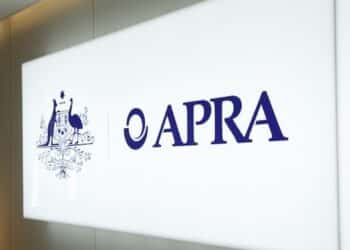For Franklin Templeton, Wednesday’s GDP data points to an “economy with barely a pulse”.
Australia’s GDP grew by 0.2 per cent in the fourth quarter of 2023, according to the national accounts released by the Australian Bureau of Statistics (ABS), coming in just below market expectations for 0.3 per cent growth.
Over the year, GDP saw its smallest increase in a quarter-century at just 1.5 per cent, excluding the pandemic years.
But while most economists described the data as anticipated, Franklin Templeton’s director of fixed income, Andrew Canobi, took a sterner approach.
“Today’s GDP data shows an economy with barely a pulse. Everyone expects it to be soft but aside from a tiny 0.1 per cent positive in Q3 2023, household discretionary consumption contracted for every other quarter in the year even as population grew strongly,” Canobi said.
“The household is getting squeezed like a lemon. The economy may not be at stall speed yet but it’s close.”
Conversely, the data surprised AMP’s team to the upside, after they projected growth of just 0.1 per cent.
However, the firm’s chief economist, Shane Oliver, said the yearly growth figure is most concerning.
“Annual GDP growth slowed to 1.5 per cent, the lowest in 23 years, or since December 2000, excluding the pandemic years, and is considered very low for Australia as more normal levels of GDP growth should be closer to 2.75–3 per cent,” Dr Oliver explained.
Accounting for strong population growth in 2023, Dr Oliver said per capita GDP growth actually fell by 0.3 per cent over the quarter to be 1 per cent lower over the year.
“This is the third consecutive quarterly fall in per capita GDP which some are calling a ‘per capita recession’.”
Dr Oliver noted that while the annual GDP growth is still tracking around the same level as estimated by the Reserve Bank, a slowdown in household consumption to 0.1 per cent is much lower than the RBA’s expectation of 0.4 per cent.
“We continue to see a slowdown in aggregate demand especially from the consumers, which will both help slow down demand-driven inflation rate and keep the RBA on track to cut rates from around mid-year.”
While the GDP data did not surprise HSBC’s Paul Bloxham, he highlighted the gradual decline in inflation despite sluggish economic growth as a concern, attributing inflation’s grit to weakness on the supply-side of the economy.
For the RBA, he said, HSBC expects Wednesday’s figures to be viewed as a telltale sign that the economy is moving slowly in the right direction for achieving the bank’s inflation target.
“However, despite the weakness in consumer spending, we expect that concerns about still strong unit labour cost growth are likely to mean rate cuts will not be on the agenda anytime soon,” Bloxham said.
“In short, the primary concern for the RBA will remain that inflation is too high, rather than growth being too weak, despite growth being sluggish.”
Government’s perspective
Treasurer Jim Chalmers said growth was “subdued” but “steady” amid challenging global conditions and the impact of higher interest rates.
“The economy grew a little but not a lot,” Chalmers said.
“Even weak growth is welcome growth in the circumstances.”
Chalmers defended Australia’s weak growth by comparing it to Japan and the UK, both of which finished 2023 in recession, noting that Wednesday’s “new numbers” show “we are not immune from slowing global growth”, and the “volatility” from conflicts in Europe and the Middle East.
“But the Australian economy continues to grow,” he reiterated.
The Treasurer also suggested that Wednesday’s data shows Australians are earning more and keeping more of what they earn.
“Since coming to government, we have helped secure pay rises for minimum and award wage earners, funded a rise for aged care workers, and changed the law to support secure jobs and better pay.
“We see stronger and sustainable wage growth as part of the solution to the challenges Australians confront.”
Shadow treasurer Angus Taylor disagreed, accusing the government in a press release on Wednesday of instigating a dramatic decrease in Australians’ quality of life.
“Today’s National Accounts figures prove Labor has been missing in action on managing the economy,” Taylor said.
“Australia is in an entrenched GDP per capita recession, a consumer confidence recession, and we are experiencing the slowest two quarters of consecutive GDP growth in almost 18 years outside of the pandemic.”
Australia’s GDP was predicted to reach 1.8 per cent year-on-year in 2023 by the International Monetary Fund, which in September warned that faltering private consumption would “continue to put a drag on the economy, as households with mortgages bear the brunt of higher interest rates, amidst lower real wages and depleting savings”.







